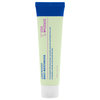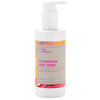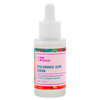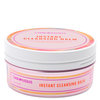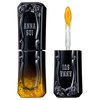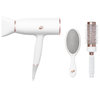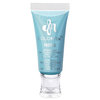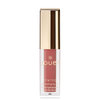
Gel manicures have quickly become one of the most sought-after nail services across the board, and for good reason—the color can last up to two weeks. But gels can also lead to brittle nails or irritation, which means there are warnings floating around the web that say that gel manis might do us more harm than good.
Some experts think it’s the gel formula itself that poses a threat (more on that in a minute) and note that the extended exposure to acetone that your nails endure during the removal process can be drying. Others worry that if your nails are constantly covered in polish—especially for longer time periods that you get with gels—you won’t see any issues that can arise under the nail, like fungal infections. To help sort all of this out, we spoke with Essie manicurist Michelle Saunders. Saunders assured us that as long as you choose the right formula and go to a pro for both application and removal, even gel loyalists don’t have much to worry about. Read on for all of her advice.
Find a gentle formula
It turns out when it comes to scoring the perfect mani, not all gels are created equal. “The most important precaution,” explains Saunders, “is to choose a gel system that’s designed to be gentle on nails.”
Gel formulas often have a few ingredients considered more harsh than what you find in traditional polishes. Methyl acrylate, which may irritate skin on contact is one; methyl pyrrolidone and BHA or butylated hydroxyanisole, are two others, both of which are known carcinogens. If you can find a gel system that leaves out these three, that’s a plus—just call up a salon and ask!
Another thing to ask? Whether or not your salon offers gel products that contain keratin, a vital protein found in nails. According to Saunders, the addition of keratin can help nails stay healthy while gels are on and after they’ve been removed—and that also means you don’t need to let your nails “air out” between applications. If your salon doesn’t offer a keratin-infused option, its best to give your nails a few days to rest and recuperate between manicures.
Make sure your salon doesn’t “cocktail”
During your appointment, pay attention to what the nail tech does. You want to make sure your salon doesn’t “cocktail,” or combine gel systems from different brands. “For example, every step of the Essie Gel System was designed to work together. If the salon uses, say, a lamp from another label, the result won’t come out as good,” explains Saunders. Don’t be afraid to ask your manicurist about the brands and types of products he or she is using.
Wear SPF to your appointment
The drying process, which usually involves using a UV light, has raised questions about UV exposure to your hands. “For anyone who still isn’t totally comfortable with the idea, there are gel systems that instead use a high-speed LED light to dry polish quickly, like Essie’s,” says Saunders. The verdict is still out on whether or not drying your nails under a UV light occasionally will cause significant skin damage. But knowing what we know about tanning beds, it’s better to be safe than sorry. To be extra cautious, massage sunscreen or another SPF product into your hands before you hit the salon.
Don’t pick or peel!
We all know how tempting it can be to peel off your polish, but Saunders warns strongly against it: “When you peel off gel polish without using the proper removal system, it can remove layers of Keratin and that results in a weaker nail.” Yikes! To keep your nails in good condition, always leave the removal to the pros. Often, you’ll need to book an appointment to have your gels removed. The process takes about 20 minutes and costs roughly $5 to $10—your tech will put cotton pads soaked in acetone around your nails and then bundle your fingertips in foil to keep everything in place. After letting that soak for 10–15 minutes, the gel loosens up, and the tech will gently scrape off the color using the flat end of a cuticle pusher, and finish with a bit of buffing to leave nails clean.
And finally, pay attention
Remember, gels stay on nails for up to 14 days at a time, while regular polish lasts maybe a week. It’s important to inspect your nails once any type of polish comes off, but even more so with gels, since you go longer between applications. After a removal session, take a look at nail beds and cuticles to make sure everything looks normal. If you spot anything awry, see a doctor, and skip all polish until you address the issue. Also, for anyone who uses nail polish and remover of any kind regularly, a daily application of cuticle balm or oil does wonders!
You Might Also Like
-

From the Archive
How To Choose The Best Nail Shape For You
- 487
-
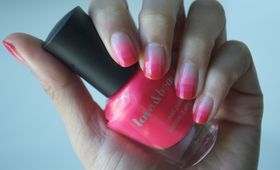
Nails
Ombré Nail Tutorial
- 535
-
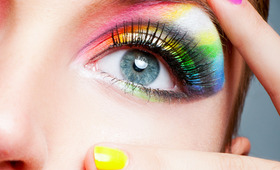
Nails
Color Charged: Rainbows Part 2
- 131
-

Nail Effects
Blogger Love: Inspirational Sites
- 51
-
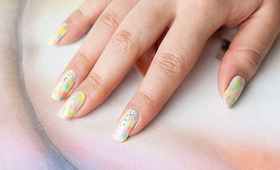
Nail Tutorials
Tie-Dye and Glitter Nail Tutorial from Star Blogger Chelsea King!
- 1354
-

From the Archive
Midnight Metallic Nail Tutorial
- 972
-
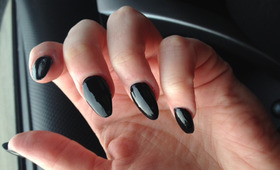
Nails
Extreme Nails: What It’s Really Like
- 645
-

Nails
The Ultimate Fall Nail Polish Color Guide
- 1157




